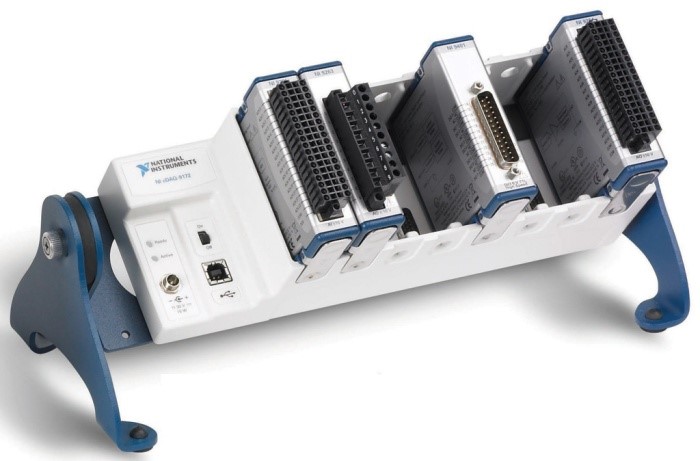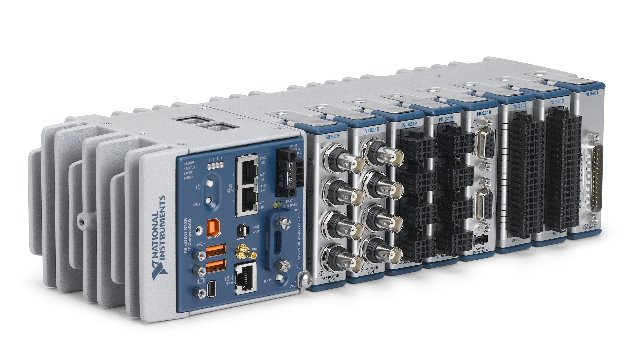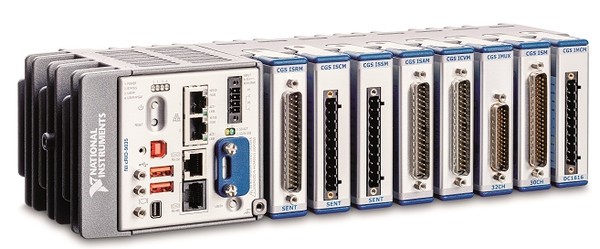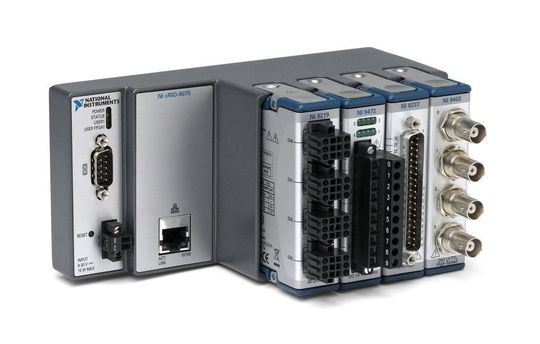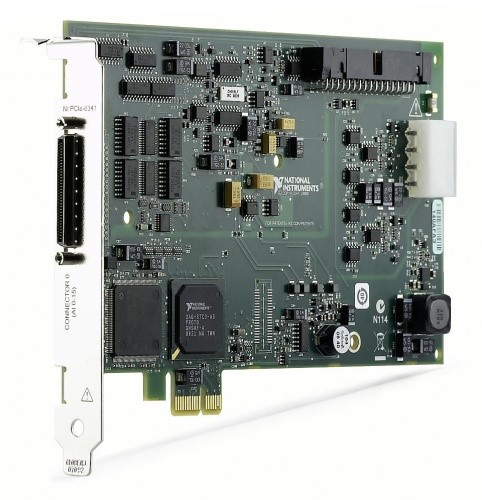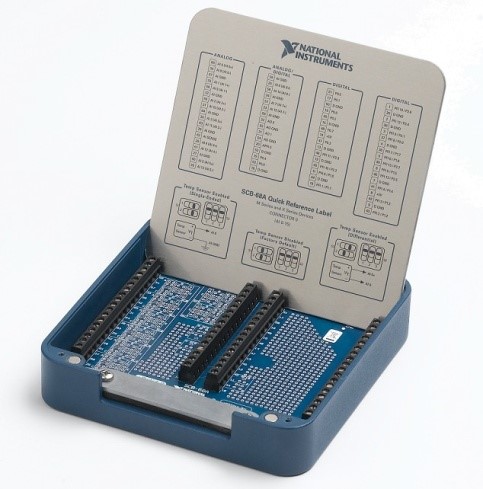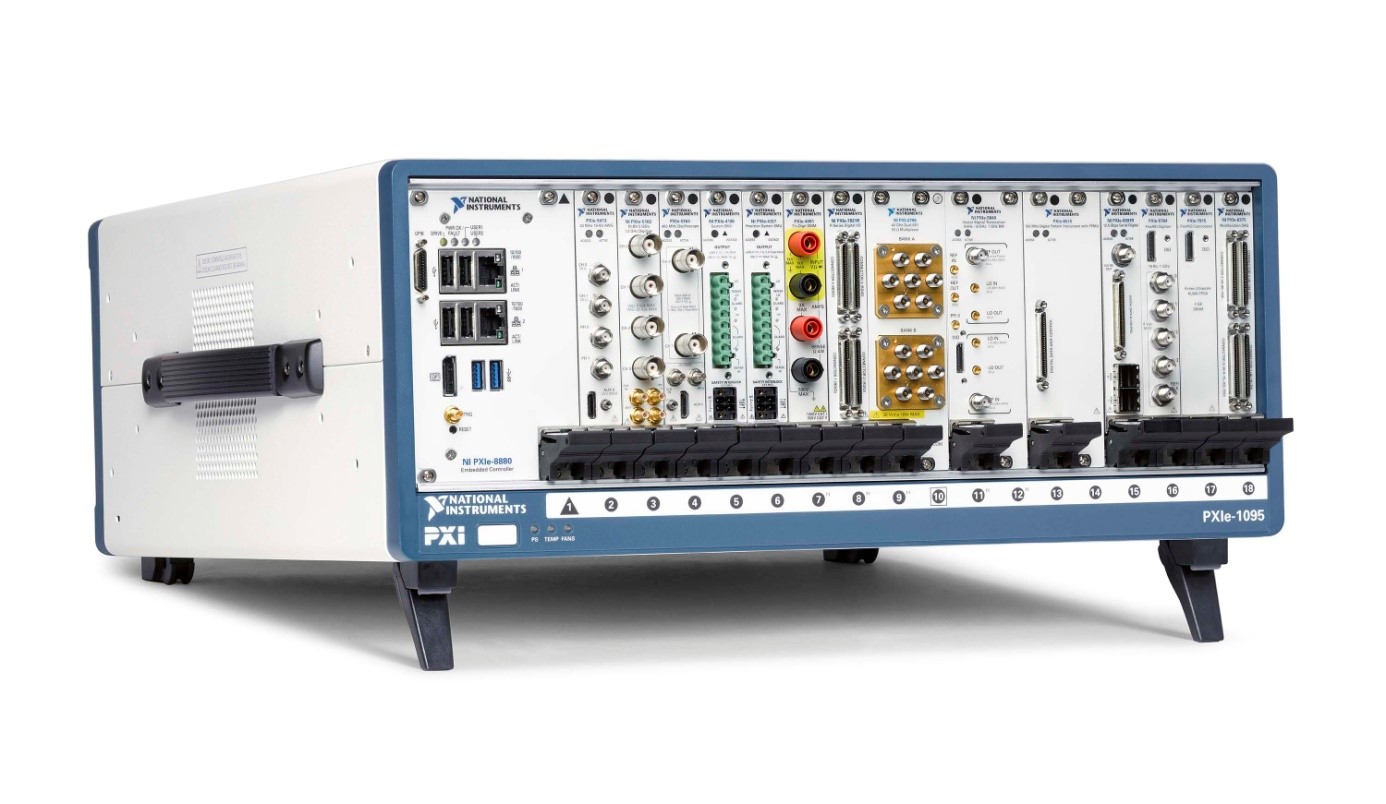At first glance, a cRIO system looks exactly like a cDAQ system. The important difference lies in the backplane, there is no passive bus installed here, but an FPGA (hence the name "reconfigurable"). A cRIO system has different layers in which user-written software runs:
- the FPGA backplane
- the cRIO controller
- the application program in a PC
LabVIEW with additional toolkits FPGA and Realtime allows to implement the code of all three levels in LabVIEW. With a pure chassis (NI-9144, NI-9145, NI-9146, NI-9147, NI-41-48, NI-9149) the middle programming level, the controller, is omitted, only the FPGA and the application software are programmed. With a cRIO controller (cRIO-9040, cRIO-9041, cRIO-9042, cRIO-9043, cRIO-9045, cRIO-9046, cRIO-9047, cRIO-9048), a computer is already installed in the device that can take on tasks which are too complex for the FPGA. A cRIO system can also work autonomously without a connected computer (measuring, controlling, regulating, recording, ..). The individual devices differ in the size and design of the FPGA, you can easily determine the size required for your task yourself by trying to compile your LabVIEW FPGA code for a simulated device. Most cDAQ
modules
also work in a cRIO system (mechanically the same), there are a few additional
modules
for the cRIO. a> , which cannot work without FPGA.

|
- Real-time behavior, fast controllers can be implemented
- Additional cards such as CAN bus, but also special
modules
such as injector control for the automotive industry
- universally usable due to the large number of available modules
|

|
- Programming much more complex, LabVIEW RealTime and FPGA required
- more expensive than cDAQ
|
A cRIO system can also be operated as a "dumb" measuring device (like a cDAQ) with the help of the "Scan Engine", but then you have no advantage from the FPGA.
|
